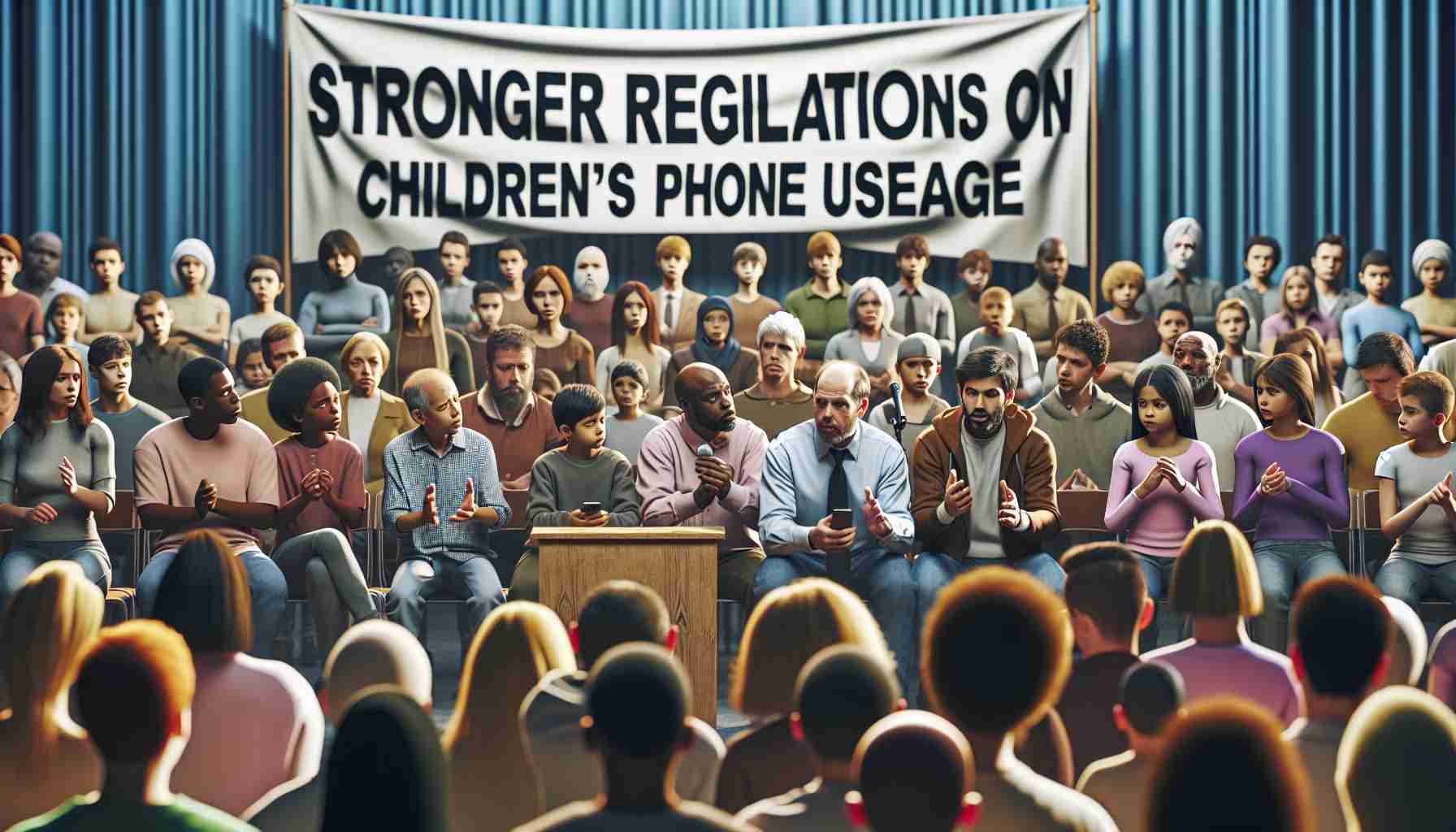Parents across the globe are increasingly concerned about the potential harm caused by children’s excessive phone usage. Initiatives such as the “Smartphone Free Childhood” campaign have shed light on the way young people are leveraging technology, while individuals like Esther Ghey, mother of the late teenager Brianna, have called for stricter regulations. These concerns have prompted demands for new rules, guidance, and restrictions regarding children’s access to smartphones.
Recognizing the necessity to address this issue, the government has taken a stand by proposing a ban on mobile phones in schools, even during break times. This move is based on the understanding that mobile phones can significantly undermine classroom focus and become disruptive to the learning environment.
To mitigate the risks associated with children’s phone usage, both Apple and Google have already introduced tools to assist parents in managing their children’s smartphone activities. Google offers a tool called “Family Link,” which can be accessed through a corresponding app. Similarly, Apple offers parental controls under its “Screen Time” settings on iPhones.
These tools empower parents to set restrictions on various aspects of phone usage. Parents can limit access to explicit content, specific apps, certain websites, as well as control in-app purchases. All of these options can be protected by a passcode, ensuring that children cannot modify the settings without their parents’ consent.
On Apple devices, parents can also utilize tools like “Family Sharing,” allowing them to track the location of their child’s phone and control purchasing requests through the “Ask to Buy” feature. Android devices provide a similar experience, with parental controls accessible through the Settings app. These controls allow parents to limit screen time, control app access, and apply content restrictions.
It is important to note that both Apple and Google prioritize the privacy and security of children. Parental tracking options are deliberately limited to prevent abuse and safeguard children’s privacy. Neither platform allows parents to view their child’s screen or intercept their messages. However, Apple does offer “Communication Safety” features, enabling children to flag potentially inappropriate media for assistance without sharing the actual content with their parents.
In a digital age where children’s exposure to technology is unavoidable, providing parents with tools to manage their child’s phone usage is crucial. While these tools are not foolproof, they offer a simple and proactive step towards protecting children and ensuring a healthy relationship with technology.
Frequently Asked Questions:
Q: What is the article about?
A: The article discusses concerns regarding children’s excessive phone usage and the initiatives taken to address this issue.
Q: What is the “Smartphone Free Childhood” campaign?
A: The “Smartphone Free Childhood” campaign is an initiative that aims to raise awareness about the potential harm caused by excessive phone usage among young people.
Q: Who is Esther Ghey?
A: Esther Ghey is the mother of Brianna, a late teenager. She has been advocating for stricter regulations regarding children’s access to smartphones.
Q: What has the government proposed to address this issue?
A: The government has proposed a ban on mobile phones in schools, even during break times, in order to mitigate the risks associated with children’s phone usage.
Q: What tools have Apple and Google introduced to assist parents in managing their children’s smartphone activities?
A: Apple offers parental controls under its “Screen Time” settings on iPhones, while Google offers a tool called “Family Link” that can be accessed through a corresponding app.
Q: What restrictions can parents set using these tools?
A: Parents can limit access to explicit content, specific apps, certain websites, as well as control in-app purchases using these tools.
Q: How can parents track their child’s phone location and control purchasing requests on Apple devices?
A: Parents can use the “Family Sharing” feature to track the location of their child’s phone and control purchasing requests through the “Ask to Buy” feature.
Q: What similar experience do Android devices provide?
A: Android devices have parental controls accessible through the Settings app, allowing parents to limit screen time, control app access, and apply content restrictions.
Q: Do Apple and Google prioritize privacy and security of children?
A: Yes, both Apple and Google prioritize the privacy and security of children. Parental tracking options are deliberately limited to prevent abuse and safeguard children’s privacy.
Q: Can parents view their child’s screen or intercept their messages using these tools?
A: No, neither Apple nor Google allows parents to view their child’s screen or intercept their messages.
Q: What feature does Apple offer to enable children to flag potentially inappropriate media?
A: Apple offers “Communication Safety” features that enable children to flag potentially inappropriate media for assistance without sharing the actual content with their parents.
Key Terms/Jargon:
– Smartphone Free Childhood: An initiative aimed at raising awareness about the potential harm caused by excessive phone usage among young people.
– Parental Controls: Tools and settings that allow parents to restrict and manage their child’s smartphone activities.
– Explicit Content: Content that includes sexual, violent, or otherwise inappropriate material.
– In-App Purchases: Transactions made within a mobile app, often for additional features or content.
– Family Sharing: A feature on Apple devices that allows parents to track the location of their child’s phone and control purchasing requests.
– Screen Time: A feature on Apple devices that allows parents to set limits on how long their child can use the phone.
– Content Restrictions: Settings that limit access to specific websites or types of content on smartphones.
Suggested Related Links:
– Apple
– Google
The source of the article is from the blog aovotice.cz
